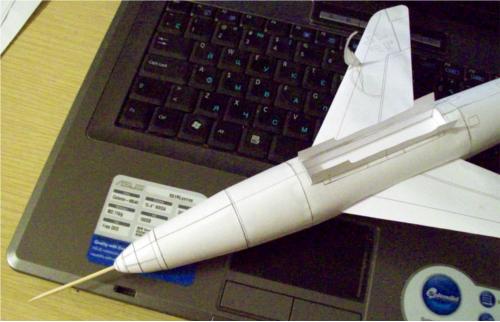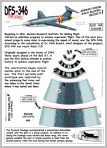
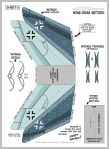
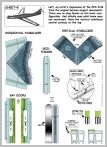
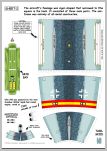
DFS-346
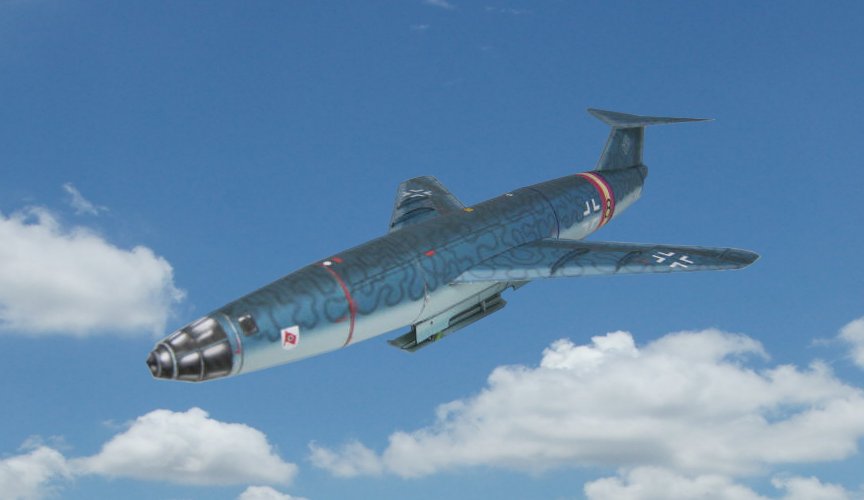
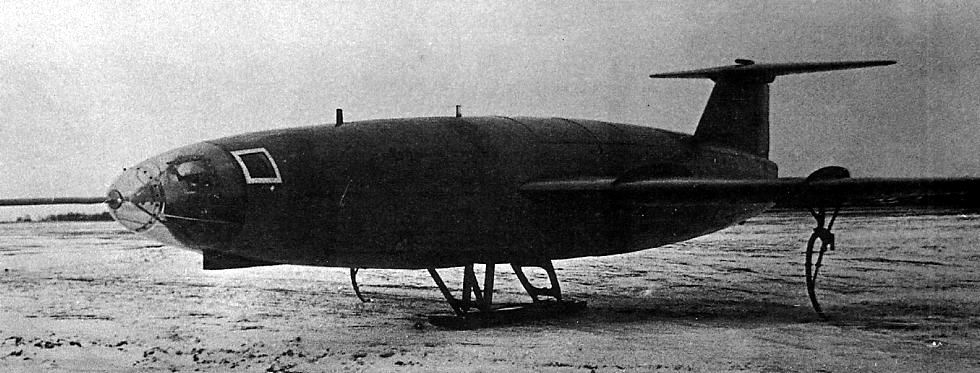
The DFS-346 was being developed alongside the DFS-228 high-altitude reconnaissance airplane. While the DFS-228 was essentially a sailplane, the DFS-346 had 45o swept wing, and with its streamlined fuselage that was hoped to enable it to break the sound barrier.
Like it's cousin, the DFS-346 also featured a self-contained cockpit that doubled as an escape module for the pilot, where the pilot flew from a prone position. It was determined that a prone pilot would fit better within the streamlined shape of the cockpit and fuselage, and would also be in a better position in which to withstand the G-force.
Also, like the 228, the 346 design was intended to be air-launched from the back of a large aircraft, such as the Dornier Do 217. After launch, the pilot would fire its Walter 509B/C engine to accelerate to a proposed speed of Mach 2.6 and altitude of 100,000 ft. This engine had two chambers, high and low thrust, and after reaching altitude the speed could be maintained by short bursts of the smaller chamber.
Because the 346 was an all metal construction, Deutsche Forschungsanstalt für Segelflug (DFS), the "German Institute for Sailplane Flight" lacked the facilities to build it, thus construction of the prototype was assigned to Siebel Werke located in Halle where the first windtunnel models and partially built prototype were captured by the Soviet Union. All the materials were packed up and transported to the OKB-2 (Design Bureau 2), where the prototypes were reconstructed and tested. Windtunnel testing revealed some aerodynamic deficiences which could result in the aircraft stalling with no chance of recovery. The fusalage was lengthened, and two wing fences were installed on the next iteration of the DFS-346. Wing fences were frequently a solution employed by the Soviet Union on a majority of the swept wing aircraft they developed during the 1950s and 60s.
The 346-P was completed and ready for testing in 1947, which was an entirely new 346 prototype incorporating the refinements suggested during testing. Although not outfitted with a rocket engine, ballast was added to simulate the weight of an engine and fuel. The 346-P was successfully flown by Wolfgang Zeise through as series of tests which led to the construction of three more prototypes, with the target of a powered flying model.
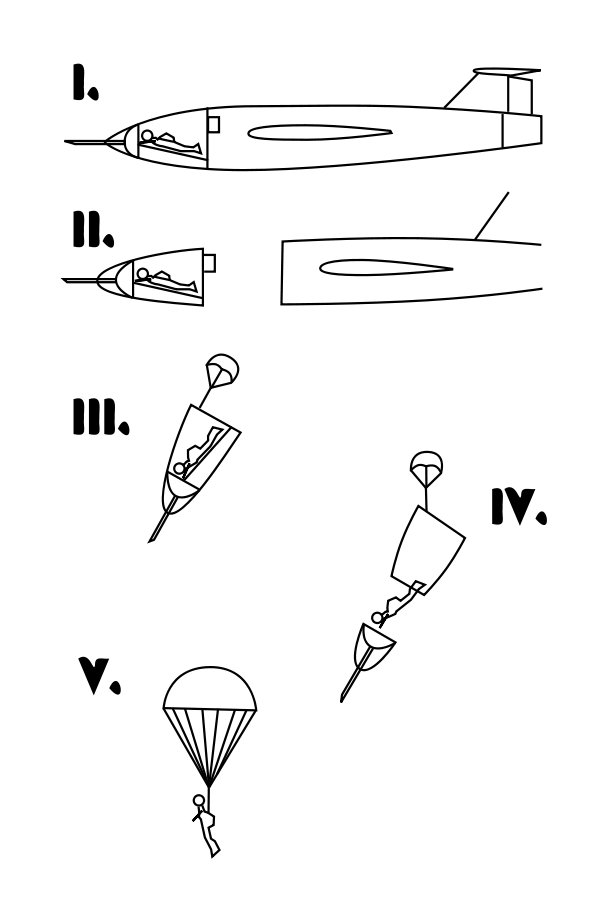
About the middle of 1951, the 346-3 was completed and tested. Zeise conducted the first powered flight on August 13, 1951, using only one of the plane's engines, and held the speed to Mach 0.9 during it's test flight. On the third powered flight, things went drastically wrong. Separating from the carrier plane at 30,500 ft, the pilot fired the engine and accelerated to 560 mph. The rocket engine worked as expected, and the -3 quickly accelerated and started to clime and soon had flown very closely to the carrier plane. Shortly thereafter, the pilot reported that the plane was not responding to controls and he was losing altitude. Ground control instructed him to bail out. Using his escape capsule, he separated from the aircraft at 21,000 ft and landed safely by parachute. With the continued loss of aicraft, the 346 flight program was abandoned.
What People Say!
BMartin: Vladimir strikes again with another great model. Everything fit exactly as it should, and is a fantastic compliment to the 228.

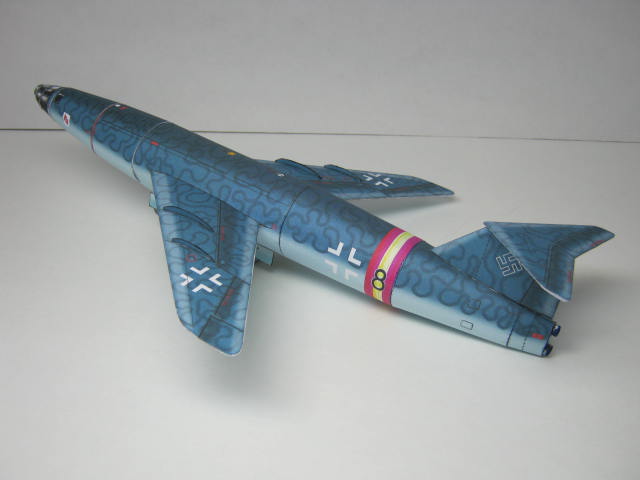
Pictures courtesy of Bob Martin
Vlad's Workshop - Building the DFS-346
Here are a couple of development shots of the DFS-346 in progress while sitting on Vladimir's work bench.
